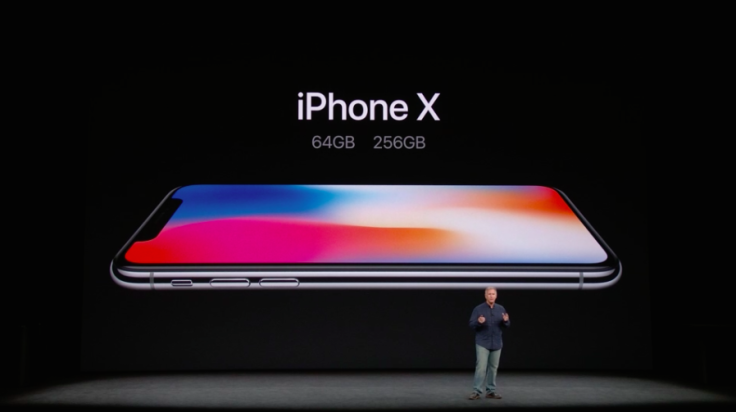Samsung’s iPhone X Profit Is A Good Look; Here’s Why

Samsung stands to earn more from the still unreleased iPhone X than it has from its own Galaxy S8 flagship, which has been on the market since April. Samsung may earn up to $14.3 billion from the components it has provided to the Apple flagship, according to a report by Counterpoint Research. In comparison, sales expectations for the Galaxy S8 are at about $10 billion.
However, reports have not taken into consideration that Apple and Samsung’s smartphone lineups are vastly different. Apple has long been known for a single, high-end product line, while Samsung is known for having several individual product lines that hit several price points. The iPhone X is Apple’s first attempt at experimenting with what is essentially a new product line, which for all of its similarities to Android devices, cannot truly be compared to any.
Counterpoint’s profit estimates for the iPhone X and Galaxy S8 are in accordance with each device's first 20 months on the market. The iPhone X will release Nov. 3 and is projected to sell 130 million handsets. For Samsung, these sales would equate to earning $110 per handset, which feature components such as OLED displays, batteries, and capacitors. Meanwhile, the Galaxy S8 is expected to sell 50 million handsets. The Galaxy S8 was Samsung’s first device to introduce an infinity style display with an on-screen home button instead of a physical button.
Sales figures for the Galaxy S8 do not tell the entire story of Samsung’s revenue potential. The manufacturer offers other products, such as the Galaxy Note 8 and devices in the Galaxy A line, Galaxy C line, and others. Many devices in these product lines also feature OLED displays and when combined would likely exceed iPhone X in earnings for Samsung. Where Apple has long focused, primarily on the high-end, Samsung has long made served markets in need of cheaper price points
In addition to the iPhone X, Apple’s 2017 product lineup includes the iPhone 8 devices, the iPhone 7 devices the iPhone 6s devices and the iPhone SE. All of these smartphones are different iterations of the same device, which only become cheaper when a new device releases. They all also include components from Samsung, from which the manufacturer will be making a profit.
When considering this, the Galaxy S8 earning Samsung just $4 billion short of its potential iPhone X earnings is still impressive. With the manufacturer at the helm of the OLED display industry, it had a perfect opportunity to make the iPhone X into a massive financial gain.
The iPhone X is Apple’s first device to feature an OLED display and the tech giant had no choice but to work with Samsung for this component as the Korean manufacturer has a monopoly on OLED displays. Samsung likely had no issue with Apple’s potential success with the iPhone X also being its own success, in addition to revenue, it earns from the Galaxy S8 and other devices.
Reports indicate Apple is pushing other display suppliers, such as Sharp and Japan Display to increase their OLED production. Rumors prior to the iPhone X release also suggested Apple has considered working with LG and could even attempt to develop proprietary OLED displays in the future. Still, similar to production with Apple’s A-series chips, Samsung will likely be involved with component supply for Apple devices for many years to come.
© Copyright IBTimes 2025. All rights reserved.




















